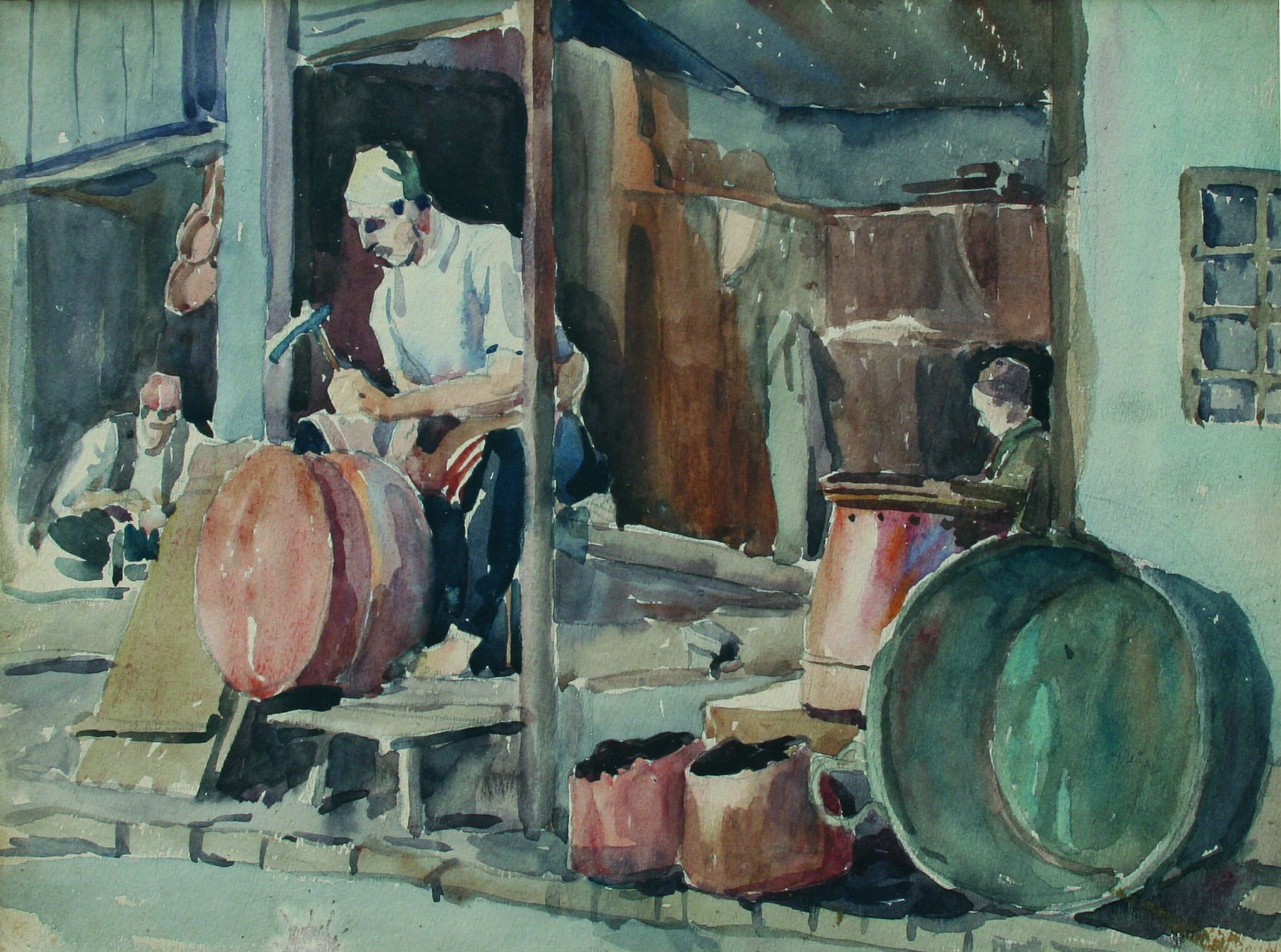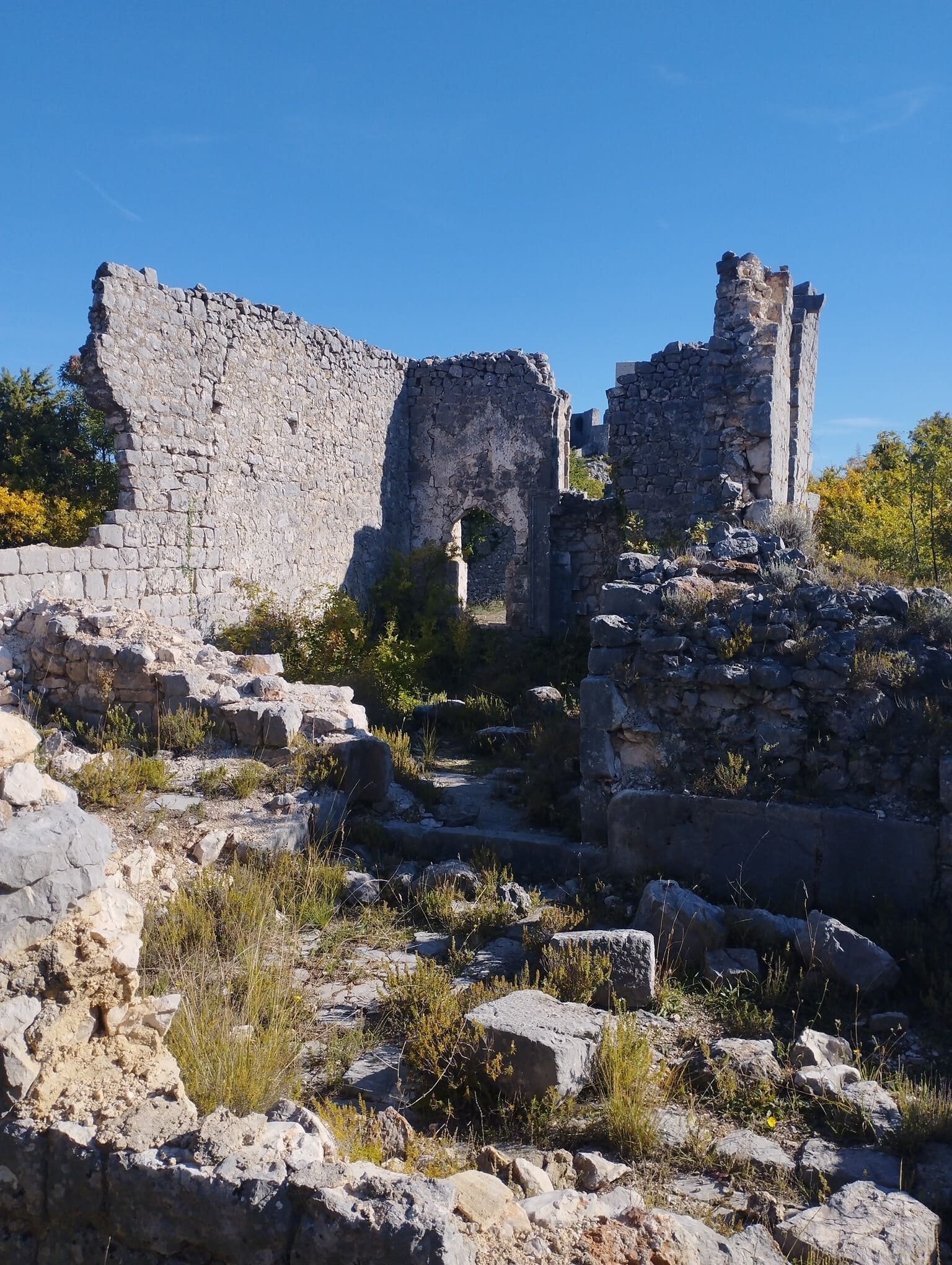
COPPERSMITHING
Author: Amra Madžarević, Museum of the City of Sarajevo • Illustration: Todor Švrakić, Museum of the City of Sarajevo

Copper-smithing is one of the oldest crafts, and one of the few which have survived to this day. The Kazandžiluk Street at Baščaršija in Sarajevo, where coppersmiths (kazandžijas) work, has been preserved in its original form.
Production of cauldrons for cooking for army proved necessary upon the arrival of Ottoman army, and some craftsmen soon began to make them. They were therefore named kazandžijas (Bos. kazan – cauldron). The first coppersmith was mentioned in 1489. Need for their products increased over time, and registers from 1530 list 13 masters of this craft. Besides cauldrons, they began to make other products of copper as well, e.g. dishes: plates, pans, pots; coffee-ware: coffee pots, boxes, sugar bowls, braziers; water vessels: ewers, jugs and pitchers, trays for fountains and cups. Coppersmiths also made products for needs of churches and synagogues: censers, candle holders, menorahs and candlesticks.
Due to the broad range of products which they made and their widespread use, coppersmiths soon became some of the most significant craftsmen. There was a great demand for their products and, in line with the Islamic concept summarized in the hadith: “Allah is beautiful and loves beauty” (which is the heading of one of the sections in this project), they were richly decorated.
Items were made of molten copper, which was later molded into the desired shape and plated with tin. There were separate craftsmen who tin-plated vessels, the so-called tinsmiths (kalajdžijas). Besides tin-plating, vessels were also decorated. Buhurdars (censers) were richly ornamented using a technique known as savat. Savat is an Arabic word and means engraving. A copper vessel, originally reddish, plated with tin, is engraved in such a way that the engraved motif remains red. There is also the black savat, though in this case the vessel is coated with oily platinum. Savat was a task of some craftsmen, as well as of women and girls at homes. These ornaments, of floral or geometrical shape, reached true artistic values, and this craft therefore rightly belongs to artistic crafts. A particular attention was paid to coffee-ware, so that, at times of leisure with this popular beverage, people could also enjoy in the beauty of ornaments on the vessels, and to plates in which food was served. In the period of the Ottoman Empire Sarajevo coppersmiths were widely known and their products were appreciated. Upon the arrival of Austro-Hungary in our region, new authorities strove to protect some crafts, including copper-smithing, and upon the opening of the Factory of Artistic Crafts in Sarajevo young craftsmen were taught and continued the local tradition.
Coppersmiths (Kazandžijas)
Coppersmiths’ bazaar in Sarajevo occupied the central part of the marketplace, where it is found even today, and at the time of the boom of this craft it encompassed several streets. In the Oprkanj Street, which was part of the coppersmiths’ bazaar, a maktab (religious school) was founded in 1783 which was attended by apprentices of all crafts. It was there that they acquired knowledge in religion and Arabic. Classes in the maktab started early in the morning, so that apprentices could come to work on time.
The fact that this craft was well-developed and that coppersmiths were well-off is supported by the data on benefactors from this guild. For example, coppersmith hadži Ahmed commissioned a mosque and a maktab in Širokača neighborhood in Sarajevo; hadži Osman Hadžimuharemović had six warehouses and the maktab in the Oprkanj Street fixed and endowed part of revenues for salaries of mutawalli and supervisor; some of them also endowed part of their revenues for the maintenance of mosques. Some coppersmiths were very well educated, such as Ahmed, son of Alija (Ahmed bin Ali el-Gazgani el-Bosnevi es-Saraji), who transcribed well-known works and decorated them with calligraphy. In his book Esnafi i obrti u Bosni Hercegovini (1463–1878) (Guilds and crafts in Bosnia and Herzegovina), historian Hamdija Kreševljaković included many details about this and other crafts and craftsmen. He found most of these data in sijils – court registries, where all verdicts, court hearings and other cases of court litigations were recorded. Besides, there were the so-called defters of all crafts. These were books/registers where craftsmen and merchants recorded turnover, assets and liabilities, as well as names of masters, apprentices and journeymen. Coppersmiths' defters were some of the most extensive ones, which confirms that their business was going well. Defters are kept in archives and libraries.
Today, the coppersmiths' bazaar is a national monument of culture and has been preserved in a fairly good condition. Coppersmiths still work there and it is one of the significant tourist attractions. Their products are still used in households as part of traditional serving.
References:
Kreševljaković, Hamdija (1991), Esnafi i obrti u Bosni i Hercegovini 1463-1878, Selected works II, Sarajevo: Veselin Masleša.
Truhelka, Ćiro (1954), “Umjetnost dekorisanja u bosanskoj metalnoj industriji”, Naše starine II, Sarajevo: Zavod za zaštitu spomenika kulture, prirodnih znamenitosti i rijetkosti Bosne i Hercegovine.

